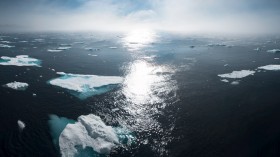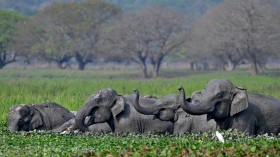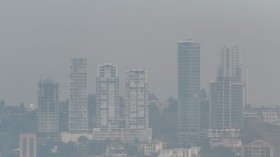A gigantic April 2013 landslide at a Utah copper mine was the largest non-volcanic landslide ever recorded in North America. The event was so powerful that it triggered a number of small earthquakes, according to University of Utah researchers.
The landslide reached speeds of 100 mph and carried enough rock, dirt and debris to bury New York's Central Park under 66 feet of rubble.
A new study presented as the cover story of Geological Society of America magazine GSA Today reports that the landslide is the first ever documented to trigger earthquakes.
The landslide occurred in the form of two enormous rock avalanches on the night of April 10, 2013 at Kennecott's Bingham Canyon open-pit copper mine, 20 miles southwest of downtown Salt Lake City.
During these events about 65 million cubic meters of rock -- with a total mass of 165 million tons -- collapsed and slid nearly 2 miles into the open pit floor.
The event was so powerful that seismic monitors as far as 250 miles away registered the event.
At the mine, seismic monitors typically used for measuring authentic earthquakes recorded the two landslides at magnitudes 5.1 and 4.9. The 16 earthquakes the landslides triggered were smaller, the researchers found.
The Kennecott mine, which has been in operation for 107 years, produces a quarter of the copper used in the US.
Mine officials and geologists monitor seismic activity at the mine very closely, which led them to be able to predict that the landslides would occur.
"This is really a geotechnical monitoring success story," said Kris Pankow, associate director of the University of Utah Seismograph Stations and the study first author. "No one was killed, and yet now we have this rich dataset to learn more about landslides."
Although the scientific data obtained by the event is some of the first of its kind, the researchers said the event was not a full display of the force of Mother Nature.
When Mount St. Helens erupted in Washington in 1980, the landslide unleashed by the event was nearly 60 times larger than Kennecott's.
At Zion Canyon in southern Utah, another landslide that occurred about 8,000 years ago was five times as large, according to an Associated Press report.
© 2024 NatureWorldNews.com All rights reserved. Do not reproduce without permission.




![Chimpanzee Behavior: Chimp Wars Show That Murder and Violence are Not Exclusive to Humans [Report]](https://1471793142.rsc.cdn77.org/data/thumbs/full/70473/280/157/50/40/chimpanzee-behavior-chimp-wars-show-that-murder-and-violence-are-not-exclusive-to-humans-report.jpg)
